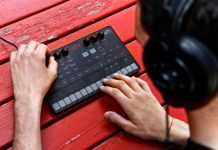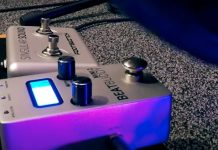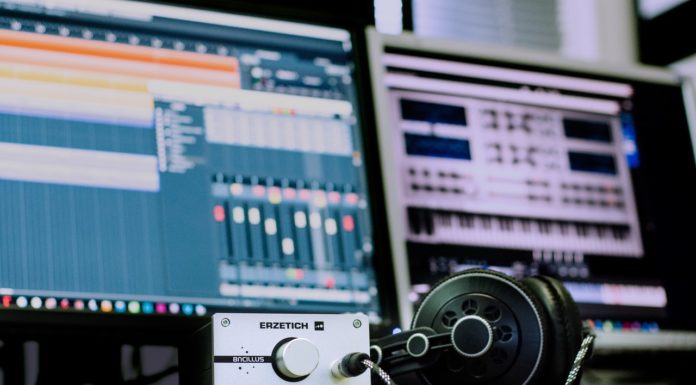You will be able to find a number of different guides that claim to give you a foolproof formula for recording vocals but it is important for you to know that there is no such set formula that can work for the different types of artists and musicians.
Similarly, different genres of music may call for different ways in which vocals are recorded.
The only thing that you can do is have a basic idea and structure in mind. From there, you can build upon the basic steps to come up with a formula that works best for you.
To learn more about all the basics, keep reading!
Get the Basics Right
If you are looking to record vocals, you may need to set up a small home studio that will have all the equipment — software and hardware — that you will be using in the process of recording and then mixing. This doesn’t need to be a large, specially designed room. It can simply be a corner in your existing bedroom, as the factors that will really make the difference are discussed below.
Picking the Right Microphone
The most crucial step when it comes to recording vocals — other than the voice that you are going to be using — is choosing the best microphone for the job. There are many different types of microphones that you can buy in stores or online, ranging from condensers, ribbons, dynamics to even USB mics.
The price range of the different microphones can also vary significantly with many cheap under $100 options available. Most people who are unwilling to compromise on quality go for the more expensive ones, which can even cost over $500.
You must keep in mind that while expensive ones may be attractive, there are cases where a cheaper option may work better for you.
For the lead vocal, larger diaphragm condenser mics can work well, while dynamic mics may be preferred for live performances.
Positioning
When you first start recording, you may find yourself confused about how far the mic should be. In order to get the best possible sound quality, it is important that it isn’t too far from you, or it could pick up too much ambient noise from the room.
Similarly, it shouldn’t be too close either or the bass may be affected. Under regular circumstances, a distance of anywhere between six inches and ten inches is a decent margin. Try out a bunch of different positions before settling in on one.
The Right Recording Environment
For beginners, it may be difficult to get a soundproof or acoustically treated room at home. While this can give rise to some room reflections, it doesn’t need to be a dampener in the overall process. You need to keep a couple of things in mind.
First, ensure that there aren’t too many big windows or mirrors in the room that you are using.
It can help if you avoid rooms with ceramic tiled floors.
Try out a bunch of different spots within the room before settling in on one for recording.
Gain and Processing
There was a time when you had to record at very high levels — between -3 and 0 dB — but that isn’t really the case anymore. With digitalization in the field of recording vocals, you have the freedom of recording even at low input levels — let’s say between -15 and -20 dB — but choosing a middle path is always the preferred method of moving forward. You will not need to switch the gain levels through the song, except in cases where very soft parts are followed by very loud ones. It is recommended that you don’t go overboard with processing at this stage, as you will not have the power to undo it later.
Double Tracking Vocals
If you are looking to make the vocals stand out, you can consider double tracking — or even triple or quadruple tracking — them. Keep in mind that if you do this for all the vocals in the song, they will not give you the desired effect. Instead, choose the parts that need to be thickened for more impact.
You can also try double-tracking the backing vocals to give them an interesting chorus effect.
The Way Forward
A fully finished track doesn’t just land in your lap once you are done with the recording portion of the job. There is a lot more mixing and processing that goes into making the finished piece. While that can be an entirely different piece altogether, it is important to briefly mention the major components of this processing.
- EQ — Equalization is the process in which the balance of the frequency components is changed to meet the right level. There are instances where people use two EQs so that the frequencies are cleaned up and they can remove any low-end or high-end disturbances.
- Compression — If you need to get rid of any of those transient peaks that can ruin the overall effect of the final product, you will need to use compression. The general rule of thumb is that the larger the arrangement, the more compression you need to do.
- Distortion — If you really want your vocals to be the center of attention and pop a little, you need to give some thought to analog or tape distortion. While there are no exact rules about how you can work with this, try a couple of settings out to reach a good sound level.
- Reverb — You can turn to reverb to turn your music towards a specific direction. However, you must keep in mind that there are many people who rely too much on reverb so you don’t want to go overboard either.
As was mentioned before, there is no single formula that works for all people who record vocals. While the initial phase will involve more of a hit and miss kind of process, you will be able to see what works for you and what does not.
Once you have a better idea about this, you will be able to devise your personal strategy for future recordings.
Keep in mind that trying new things is never a bad idea. Use the basics from this guide and keep experimenting till you find the right way!









![5 Best 49 Key MIDI Controllers 2022 [Reviews & Buyer’s Guide] best 49key midi keyboards](https://homestudiohub.com/wp-content/uploads/2020/03/best-49key-midi-keyboards-80x60.jpg)



